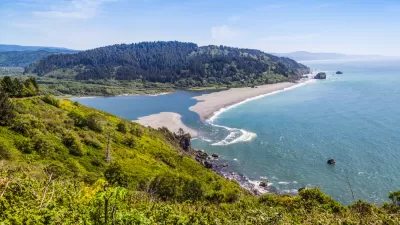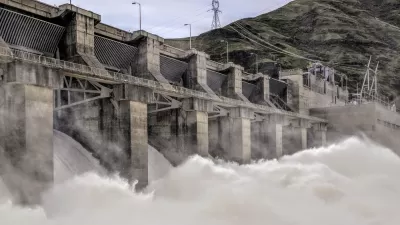In 20 years, dam removal has gone from a "fringe notion" to "wide acceptance." National Geographic explains how and why this sea change occurred.
Michelle Nijhuis reports on the quickly growing trend of dam removal in the United States by first citing the example of White Clay Creek, a tributary of the Delaware River in northern Delaware.
"The White Clay Creek dam was the first ever removed in the state of Delaware, but it was far from the only one removed in the United States last year. On Tuesday, the conservation group American Rivers announced that 72 dams were torn down or blown up in 2014, restoring some 730 miles of waterways from California to Pennsylvania."
According to Nijhuis, supporters of dam removal mostly align behind the cause of fish like salmon, American shad, striped bass, and river herring. Dam removal advocates have scored several high-profile victories, such as the removal of the 210-foot-high Glines Canyon Dam on the Elwha River in Washington state in 2014. But, as Nijhuis explains, "most of the 865 dams removed in the United States during the past 20 years are small structures originally built for flood control, irrigation, or very local hydropower."
The article also includes discussion of how dam advocates have shifter their attention to watershed restoration, which requires removal of several dams at once, as well as international dam removal projects in Europe and Japan.
FULL STORY: Movement to Take Down Thousands of Dams Goes Mainstream

Trump Administration Could Effectively End Housing Voucher Program
Federal officials are eyeing major cuts to the Section 8 program that helps millions of low-income households pay rent.

Planetizen Federal Action Tracker
A weekly monitor of how Trump’s orders and actions are impacting planners and planning in America.

Ken Jennings Launches Transit Web Series
The Jeopardy champ wants you to ride public transit.

Washington Legislature Passes Rent Increase Cap
A bill that caps rent increases at 7 percent plus inflation is headed to the governor’s desk.

From Planning to Action: How LA County Is Rethinking Climate Resilience
Chief Sustainability Officer Rita Kampalath outlines the County’s shift from planning to implementation in its climate resilience efforts, emphasizing cross-departmental coordination, updated recovery strategies, and the need for flexible funding.

New Mexico Aging Department Commits to Helping Seniors Age ‘In Place’ and ‘Autonomously’ in New Draft Plan
As New Mexico’s population of seniors continues to grow, the state’s aging department is proposing expanded initiatives to help seniors maintain their autonomy while also supporting family caregivers.
Urban Design for Planners 1: Software Tools
This six-course series explores essential urban design concepts using open source software and equips planners with the tools they need to participate fully in the urban design process.
Planning for Universal Design
Learn the tools for implementing Universal Design in planning regulations.
Heyer Gruel & Associates PA
Ada County Highway District
Institute for Housing and Urban Development Studies (IHS)
City of Grandview
Harvard GSD Executive Education
Toledo-Lucas County Plan Commissions
Salt Lake City
NYU Wagner Graduate School of Public Service





























